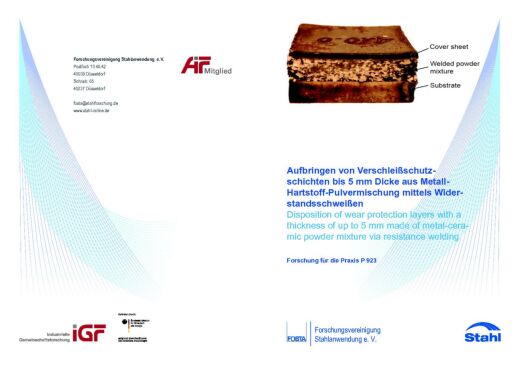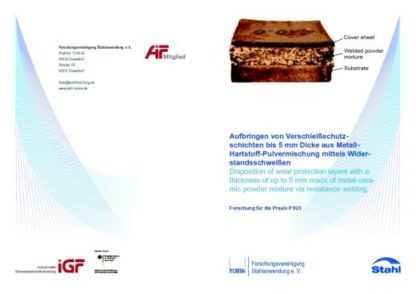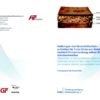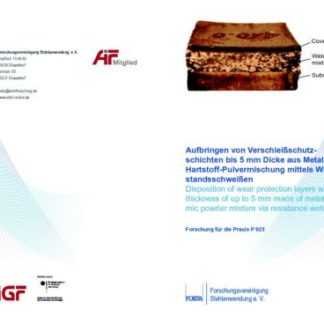Description
P 923 – Disposition of wear protection layers with a thickness of up to 5 mm made of metal-ceramic powder mixture via resistance welding
Components are often provided with protective coatings in order to protect them from wear caused by external influences. For metal parts, especially when they are subjected to strong mechanical loads, this is carried out by the welding-over of layers with respectively good wear properties, the so-called hard-surfacing by deposition welding. Normally, arc-based welding processes, as, for example, gas-metal arc welding (GMA) or submerged-arc welding (SA) are used. These methods have the disadvantage of a relatively high energy input and thus accompanying thermal load for the used materials.
As far as the part which is to be protected is concerned this means that the use of higher-quality steels is not necessarily useful since the partially complex material properties will be deteriorated by the heat input. Therefore, it is referred to more simple steel qualities which, however, entail the loss of a high potential for lightweight construction. In the field of coating materials, only hard materials which do not disintegrate during surfacing are, due to the high process temperatures, used for the improvement of the wear resistance. These hard materials are, normally, very expensive. Within the framework of this project, the method of surfacing by means of resistance welding has been investigated. Here, by means of conductive resistance heating, a mixture of hard materials powder and a matrix powder on iron basis were welded to a closed layer and, at the same time, applied to a substrate. The less expensive hard materials which have been used in the project are, besides silicon carbide and zirconia mullite, mainly materials based on aluminum oxide. The used matrix materials are mainly iron powder and also cast iron powder. The achievable layer thickness values are approximately 3 mm, with appropriate wear mechanisms they obtain a clear improvement of the wear resistance. With a multiplelayer build-up of the surfacing layer it is possible to obtain larger layer thickness. The degree of dilution is, here, far below that of conventional surfacing methods, the heat affected zone is also clearly smaller. In future research work, the further optimization of the wear properties, the development of continuous methods for the coating of larger areas and also the direct production of contoured are as are conceivable.
The research project (IGF-Nr. 17421 N) was carriedout at Institut für Schweißtechnik und Fügetechnik der RWTH Aachen. FOSTA has accompanied the research project work and has organized the project funding from the Federal Ministry of Economics and Technology through the AiF as part of the programme for promoting industrial cooperation research (IGF) in accordance with a resolution of the German parliament.
Only available in german language.
Published in:
September 2018




